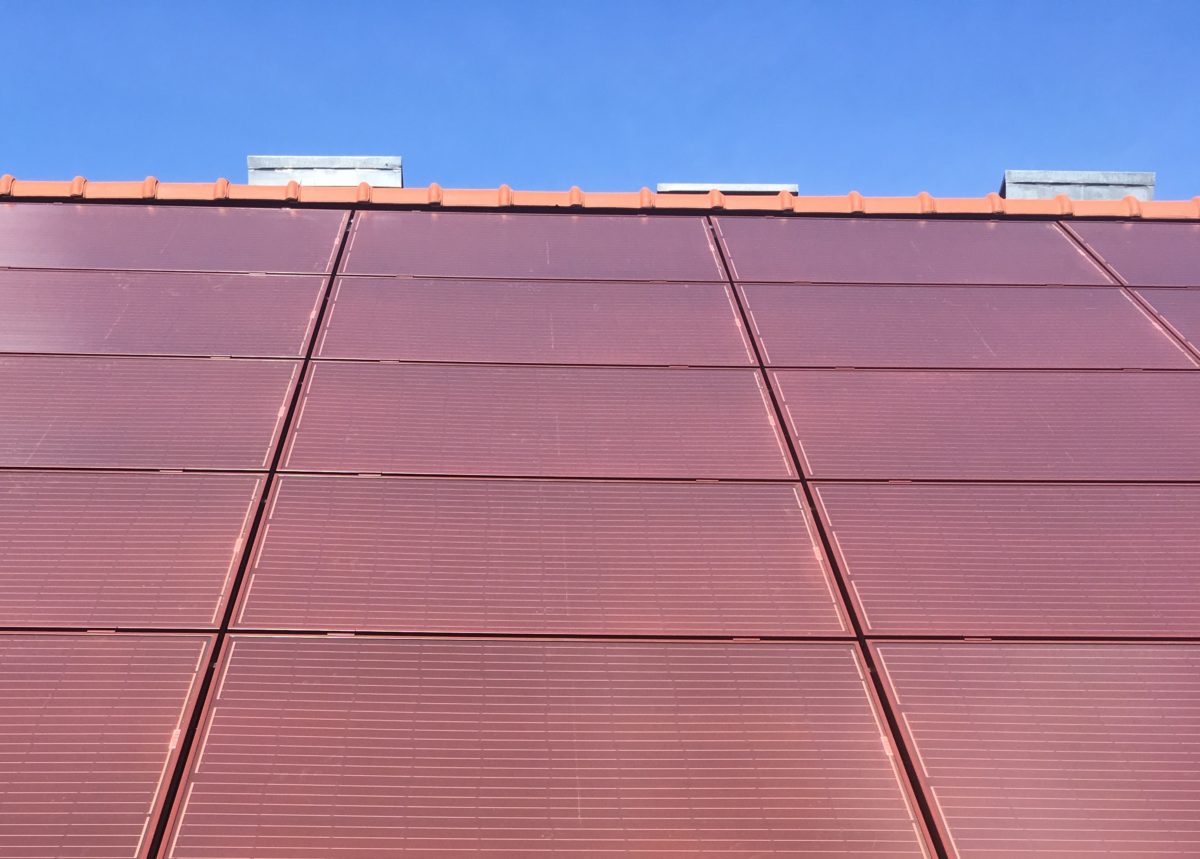Italian solar manufacturer Sunerg has developed a BIPV monocrystalline panel suitable for residential projects on rooftops and facades in a range of different colors.
The Sunerg X – Color module, which is produced in a standard size of 275 W with an aluminum frame and backsheet in the chosen color, is available in mahogany brown, reddish brown, bottle green and black-grey. These colors, according to the manufacturer, offer a wide range of options to better match the architectural vision and the design of a building.
“The PERC module was created for a niche BIPV market, in which blue polycrystalline or black monocrystalline modules can not satisfy aesthetics requirements,” the company's CEO, Luciano Lauri, told pv magazine. “It is also possible to have frames, clamps, and cable box colored in order to achieve better aesthetics and a seamless integration.”
Furthermore, the company offers the possibility to add dummy modules with the same colored glass, frame and backsheet that can be attached to the building envelope and adjusted to the size and dimension of the roof.
For rooftop applications, the module is available in two versions: a fully building integrated panel or a partially integrated module through a “floating architectonic structure” on top of the roof with waterproof asphalt roofing underneath.
Around 52 kW of these modules in reddish brown color were recently installed with the second approach in a residential b uilding in Copenhagen, Denmark. “In a first step, the existing cover and wooden rails were removed and a waterproof of 2-layers asphalt roofing was laid on top of the ceiling,” Lauri said. “Then, a metal hook was fixed to support the aluminum rails and the rail structure was mounted. Wiring, cable trays and cable boxes were installed and the panels were fixed to the aluminum rails with clamps.”
uilding in Copenhagen, Denmark. “In a first step, the existing cover and wooden rails were removed and a waterproof of 2-layers asphalt roofing was laid on top of the ceiling,” Lauri said. “Then, a metal hook was fixed to support the aluminum rails and the rail structure was mounted. Wiring, cable trays and cable boxes were installed and the panels were fixed to the aluminum rails with clamps.”
Sunerg added that the reddish brown color of the modules do not perfectly match the surrounding red tile roofs in the Danish project, but it explained that a lighter red color would reduce the efficiency to 240-250 W.
Lauri admitted that these modules are not as efficient as traditional monocrystalline modules, due to the extra color coating layer on the glass. He stressed, however, that their efficiency can match that of polycrystalline panels. “The module price is around 50% higher than standard mono modules,” he also said.
The durability and maintenance costs of PV systems with Sunerg colored modules are similar to those of a normal passive glass façade, Sunerg CEO further explained.
This copy was amended on 31/01/20 to state the product has a claimed output of 275 W rather than 275 kW, as originally stated in the sub-headline.
This content is protected by copyright and may not be reused. If you want to cooperate with us and would like to reuse some of our content, please contact: editors@pv-magazine.com.




275 kW panel?
Hi Pieter, The product is a 275 W panel, as stated in the article.
Hello again Pieter. Ahem! Please accept my apologies for the earlier curt response. It turns out you did spot an error in the original article about the wattage output of the module. This was subsequently corrected after you highlighted it but the change was not acknowledged in the text, as is our usual practice. Thanks for keeping us on our toes.